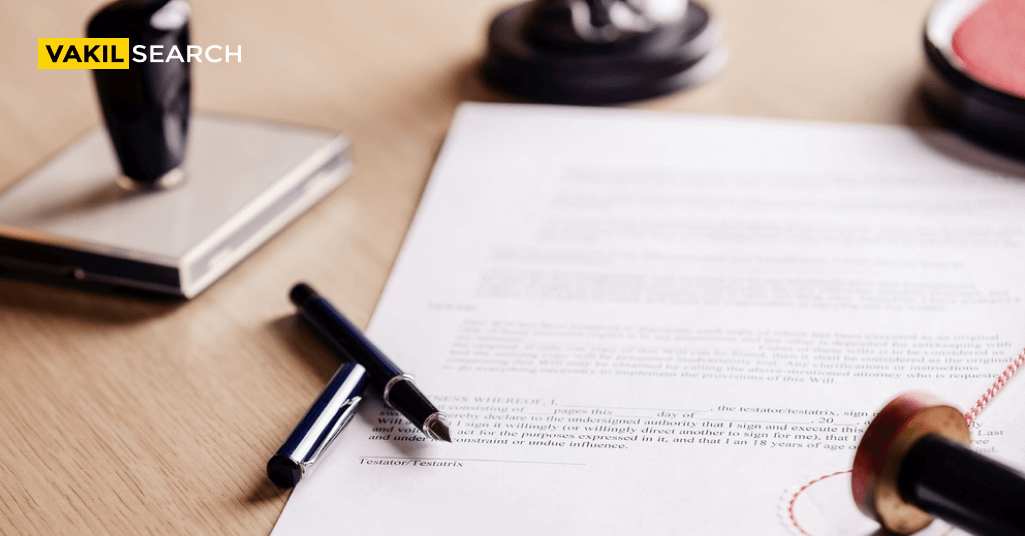It is always better to have knowledge about some important documents needed for succession that holds legal value. Then here are the details you must know.
If a person passes away without any will then their assets get automatically transferred to their legal heirs once the court verifies all the ownership legitimacy. A scenario where the deceased person did not leave any will behind or had to leave it for some illegitimate reason is called the death of the intestate. This clearly indicates that a person was not ready to create the authenticity or establish the authority of the successor of the deceased person. This is when the succession certification would come into the picture to prove the certificate holder has the authority to control the securities and all the debts that a deceased person was holding.
As per the Indian Succession Act, 1925 consisting of sections 380, 381, and 381, it is a succession certification which can control the assets of the deceased person with the debts that are owed.
What Is Succession & Petition?
A succession is issued by the district judge. A certificate is provided to the deceased person’s successor when the deceased did not prepare a will. The succession is provided by the district just of the applicable jurisdiction. To get this certification, a petition needs to be filed for which a lawyer can help in preparing it in the relevant district court. This certificate is provided to the deceased person’s succession with an aim of creating the authenticity of the successor.
How Is the Certificate for the Succession Process Initiated?
With the succession certification, the certificate holder gets the authority over the deceased person’s securities and debts. This means that if there were any debt payments of the deceased person that was about to be done and also the securities which should have been transferred to the person, it can be done by the certificate holder if the person has this certification.
But if you are wondering how the overall process works, then there is no hard and fast rule associated with it. Rather, the application needs to create a legal petition at the court. The judge would then come to the verdict with the further process on the succession certificate cost and ensure the right verification is done for the authenticity of the document.
Succession Certificate Effect
The primary aim of this certificate is to offer better protection to all the parties and pay off the debts where such kinds of payments are made in complete trust. The certificate holder will be empowered to get any shares or interests on the securities and can even transfer them as stated in the certificate. This way all the payments that were made to the certificate holder on the deceased person’s behalf will be considered valid on the legal platform. But this does not necessarily mean that the certificate owner is the securities owner or the legal heir. The legal heirs would be determined in a separate process as per the law.
Documents Needed for Succession Certificate:
Before the certificate of Succession is issued, the court needs to verify the ownership that the petitioner claims. For the petition inspection, the court needs some documents which need to be verified and then attached before handling it. This consists of:
- Deceased person time of the death
- Deceased person Address & location at the time of death
- Deceased person’s properties details
- Deceased person’s overall family details
- Deceased person’s legal heir’s complete details other legal heirs no objection certificates person right who is petitioning for a certificate succession List of debts, assets and overall securities
File for the Petition
Legal heirs who are looking forward to getting the assets ownership of the deceased person needs to file the petition. This must be done in an authorized way and submitted once the verification of the same is done in a civil court under the associated jurisdiction. The death certificate copy needs to be also attached to the petition.
The petition should also offer the detail as followed:
- A deceased person’s time, date and place of the death
- Deceased person’s legal relatives or heir’s details
- Deceased person’s residential and properties details where the person at the time of death was present
- Petitioner Rights
- Identification documents such as Passports or Ration Cards
- Other legal heirs have no objection certificates
Fees Submission:
As per the court fees act of 1870, there is a certain percentage of the estate value which is decided by the court. The value needs to be paid by the petitioner in the judicial stamp.
Publishing in Newspaper:
The court would examine the petition and also make it public through the platform of a national newspaper. The newspaper can be anything but the court needs to be also notified about the respondents and other heirs. The notice would offer a certain period of 45 days for anyone that has raised no objection against the required documents that the petition has failed to offer support.
Providing the Certificate:
If nobody comes forward to claim the assets ownership of the deceased person or raises a concern within 45 days then the court would grant the certificate to the petitioner provided their claim authority is duly verified and established.
If there is more than one petition, then the court would issue a joint succession certification. But again, if this is for a single asset then the only certificate will be given
Indemnity Bond Sign:
There are some scenarios wherein the judge would ask the petition to sign the indemnity bond. This would ensure there is no loss taking place because of the misuse of the certificate succession that has been granted. To sign this bond, the petition needs to be showing some kind of security to the court.
Process for Succession Documents & Revocation
- There is also a circumstance when the certificate succession can be revoked such as
- When the certificate is obtained fraudulently
- If the process that took place to issue the certificate was incomplete or defective
- If the certificate succession made out by the petitioner was not right
- The certificate will not be useful because of some circumstances
- If the allegation of succession made by the petitioner turns out to be false
Conclusion
Succession laws are precisely written and have some stringent rules that distribute the assets and responsibilities which are left by the person behind. If there is no legal representative to present, the right successor and court together will ensure the financial affairs are well settled. The process to get the succession certification is of around 45 days provided everything is systematically done. It is always better to consult a Vakilsearch for the same.
Read More:









